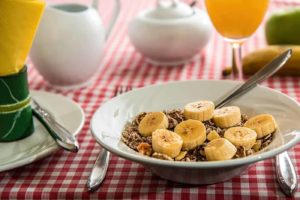With the health food movement in full swing, we’re bombarded every day with messages about natural foods that claim to be better for us than their presumptive “unnatural” counterparts.
Many of us mistakenly believe that anything with an organic or non-GMO label is automatically okay. Unfortunately, it’s not that easy. Many products marketed as health foods are loaded with sugars, flours, and other low-nutrient ingredients.
How can you tell if a food is actually healthy or just has all the right labels and colors? There’s a method to the madness of label reading. See for yourself what foods seem healthier but are ultimately still junk food.
1. Vitamin Waters
Marketed as nutrient-enhanced water with added vitamins, these cousins to the soft drink are anything but healthy. On the contrary, many of them contain just as much sugar as a can of soda and are even flavored with similar ingredients.
Take Coca-Cola’s vitamin water, which is literally named Vitaminwater. A single bottle contains a whopping 32 grams of sugar. Yet despite the name, you’ll find very few significant vitamins, other than vitamin C and a few B vitamins (most of which are the synthetic chemical variety).
Overall, vitamin water makes a poor alternative to regular water, and the added sugar makes it worse than fruit juice. Stick with the real deal and bioavailable vitamins (preferably from whole foods).
2. Cereal
As a fan of cereal, it pains me to add it to this list. But while there are more organic cereal products on the shelves than ever before, the vast number of breakfast cereals are simply vehicles for delivering large amounts of carbohydrates and sugars, especially when combined with pasteurized, homogenized milk.
While some boxed breakfast cereals aren’t without merit, particularly if they’re made with organic sprouted grains, the tradeoff just isn’t worth it so early in the morning. Don’t be fooled by cereals with fruit either; they usually have sugar added all the same.
3. Zero-Calorie Sweeteners
Despite being exposed time and time again as an unhealthy alternative to natural sweeteners, zero-calorie substitutes continue to be championed in many “sugar-free” or “diet” foods as though they were actually healthy.
The newest offender is neotame, an artificial sweetener with zero calories—and zero labeling laws. More traditional alternative sweeteners include aspartame, saccharin, and sucralose. All have been associated with different health problems, from cancer to (paradoxically) weight gain.
4. Low-Fat Foods
The category of low-fat foods continues to insult the world of healthy eating. They’re often sold in place of traditional equivalents (including skim milk and low-fat milk) and contain reduced levels of fat—typically in exchange for higher levels of sugar to maintain the flavor.
The alleged health benefits of low-fat foods can be sourced back to a long-discredited study that linked heart disease to fat consumption. In fact, the only fat definitively proven to be unhealthy is trans fat.
Today we know that consumption of healthy fats, particularly well-balanced oils such as coconut, contribute to healthier hearts and bodies. So don’t substitute the fat in your diet. (Of course, don’t go overboard either, as fat is still high in calories.)
5. Dried Fruits
The last on our list of so-called healthy foods is dried fruit. We chronically over-consume dried fruit because of its easy availability and sweetness.
But many dried fruits are slathered with oil and sugar, which makes them even more sweet and helps preserve their shelf life. Despite being high in fiber, high in nutrients, and generally tasty, they’re not as good for you as their fresh counterparts.
You should also consider that some kinds of dried fruits were once an entire piece of fresh fruit. That handful of raisins was once 30 to 40 grapes. But without the water in the grapes, the sugars in the raisins are now concentrated. When we eat dried fruits, it’s easy to consume far more sugar than we’d normally eat in a single piece of fruit.
Stick with the real deal unless you’re planning to mix a small number of dried fruits into a larger dish.
These are only five of the fake health foods to watch out for—but the list goes on. Read Patrick Earvolino’s A Terrible Ten: Health Foods That Ain’t to learn about other health food imposters, including some that may surprise you. And for an abundance of essential food facts that will help you become a smarter shopper for life, check out Stephanie Selene Anderson’s Put Your Money Where Your Mouth Is! This deceptively small guide truly covers it all.
Have you noticed any imposters masquerading as health foods? Tell us your experience in the comments.
Photos from Pixabay.




